Q: What are the caterpillars eating the plants in my yard and should I be concerned?
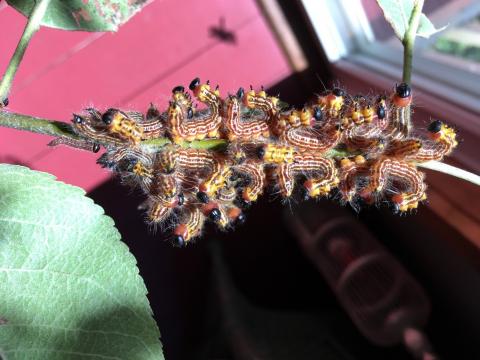
Caterpillars in the landscape are a common sight over the summer and early fall, and the vast majority of caterpillars you might see do little to no lasting damage to your trees and shrubs. That said, there are a few caterpillars that can be a pest, so learning to notice and identify caterpillars is a helpful skill for the enterprising home gardener.
What are caterpillars?
Caterpillars are the larval stage of butterflies and moths, and there are thousands of species documented in the eastern United States. By identifying a caterpillar, you can find out what it will look like in its adult form. Many caterpillars have very specific diets, feeding on the leaves of specific plants.
Young caterpillars will be smaller than more mature caterpillars, and depending on the caterpillar species, may present with varied coloration and patterning at different developmental stages.
.png)
Caterpillars are an important part of the ecosystem, providing a food source for many songbirds, insects, and more. Caterpillars also yield moths, which are an important prey species for a variety of animals in the landscape. Butterflies and moths are often important pollinators.
Tussock Moth Caterpillars
Tussock moth caterpillars are fairly common in the landscape and are infamous because some species can cause a rash when handled. Tussock moth caterpillars are generally recognized by the disk-shaped defensive glands on their abdominal segments and for their prickly tufts of hair.
One notable tussock moth caterpillar is the gypsy moth (Lymantria dispar dispar), an introduced species that defoliates a wide variety of trees including but not limited to oak, apple, birch, poplar and willow.
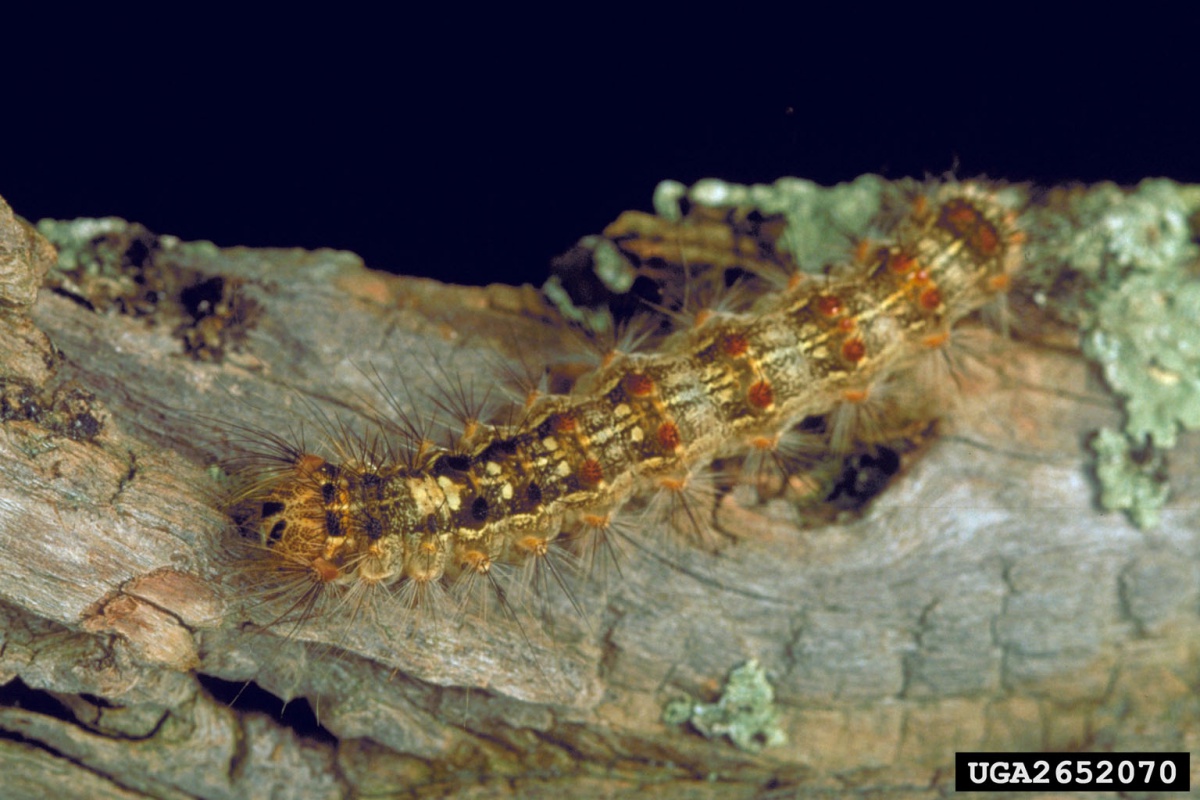
The milkweed tussock (Euchaetes egle) is well known by gardeners who plant or monitor milkweed for monarch butterflies.
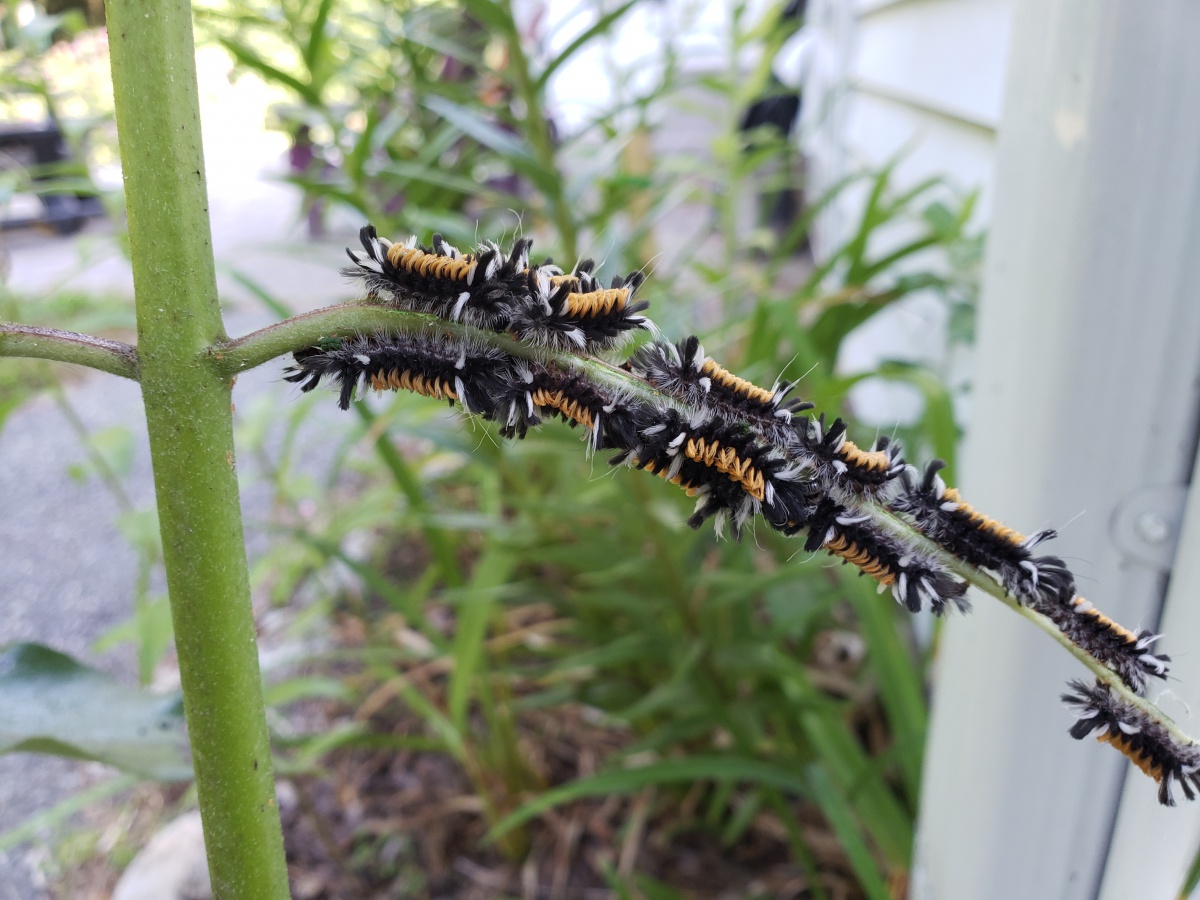
Another is the hickory tussock (Lophocampa caryae), which can cause a severe reaction when handled and feed on a variety of plants including hickory and oak.
Fall webworm and Eastern tent caterpillars
Often mistaken for gypsy moths because of their unsightly egg masses, eastern tent caterpillars (Malacosoma americanum) and fall webworms (Hyphantria cunea) are noticeable because of the webs they form on a variety of landscape trees. Fall webworms are first noticed in July, and the caterpillars feed on leaves within the web through the fall. Eastern tent caterpillars feed and form tents in early spring. Fall webworm egg masses are unsightly but not typically damaging because otherwise healthy trees have already stored enough energy for winter. The nests naturally break apart, but can be physically removed.
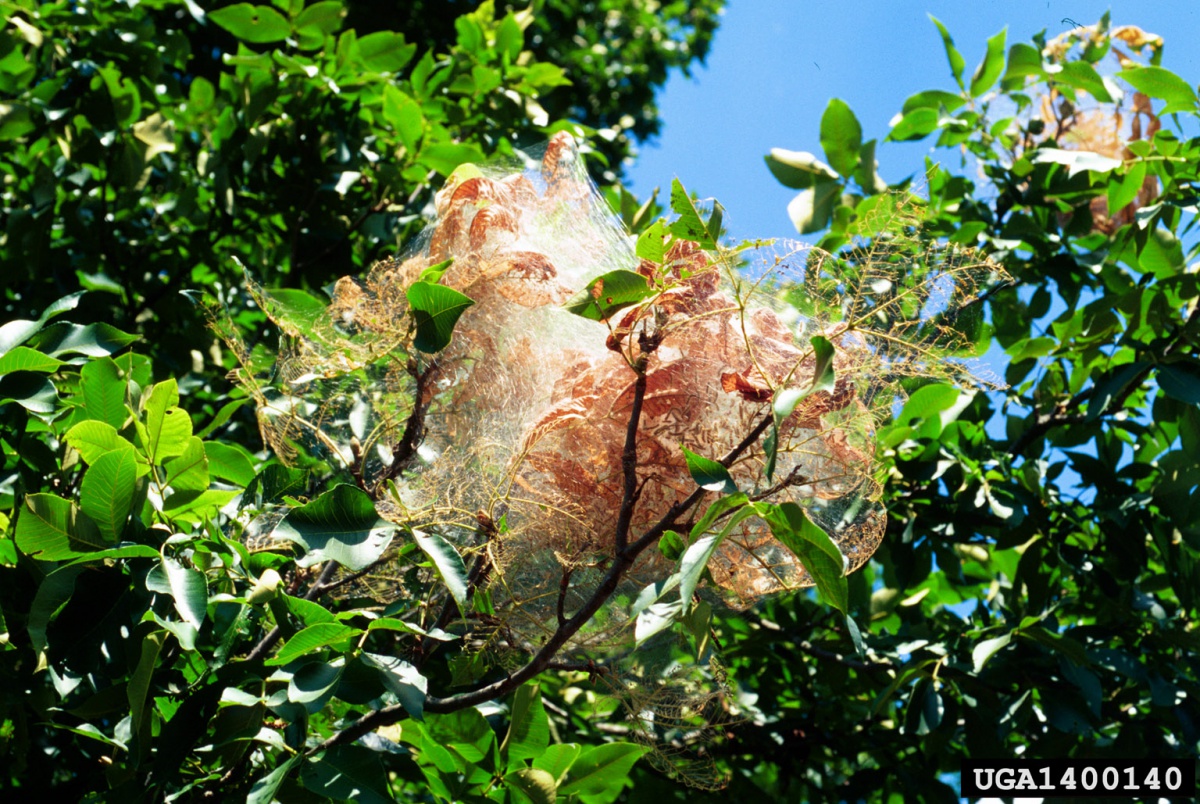
Yellow Bear and Woolly Bear Caterpillars
The woolly bear (Pyrrharctia isabella) and yellow bear (Spilosoma virginica) are both tiger moths with two generations per year that eat a wide variety of plants and are observed from spring to fall. Yellow bear are quite variable in appearance, and are often identified through a process of elimination.
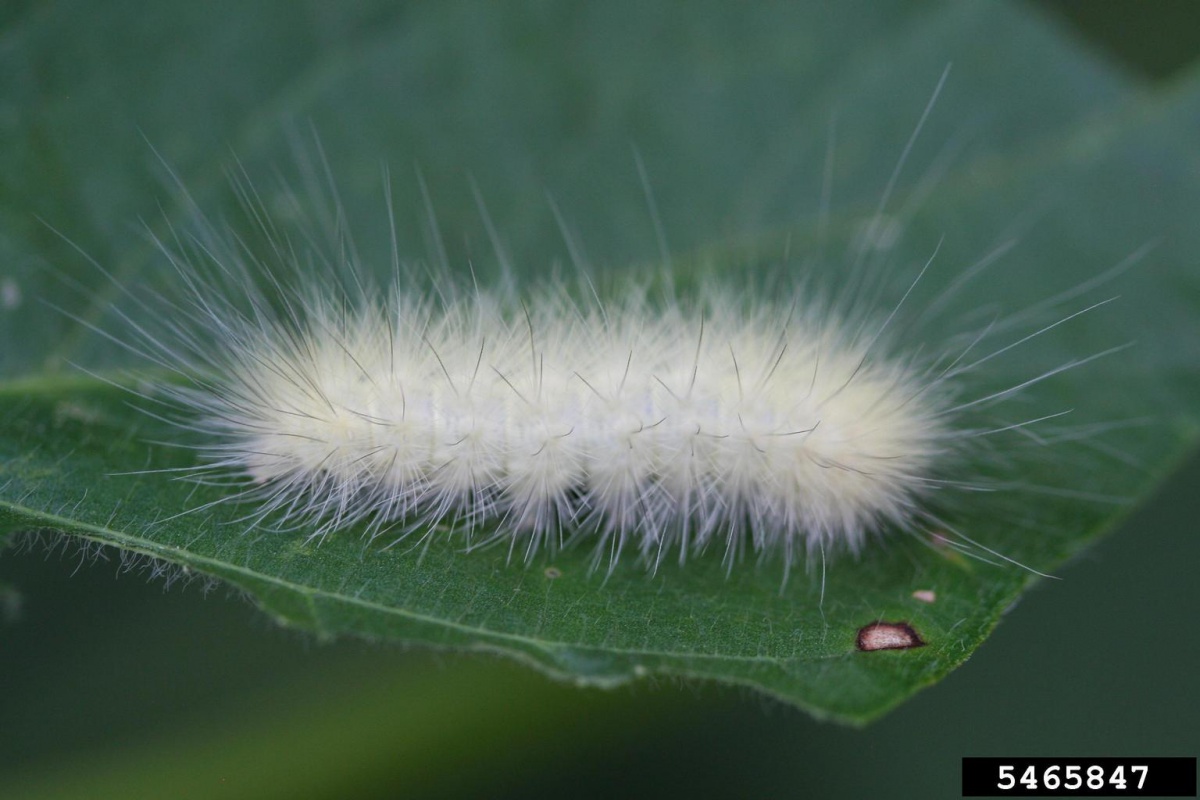
Woolly bear caterpillars are often seen crossing roads and driveways, a phenomenon that’s not well understood. These caterpillars are in the same family, Arciidae, as the fall webworm and tussocks.
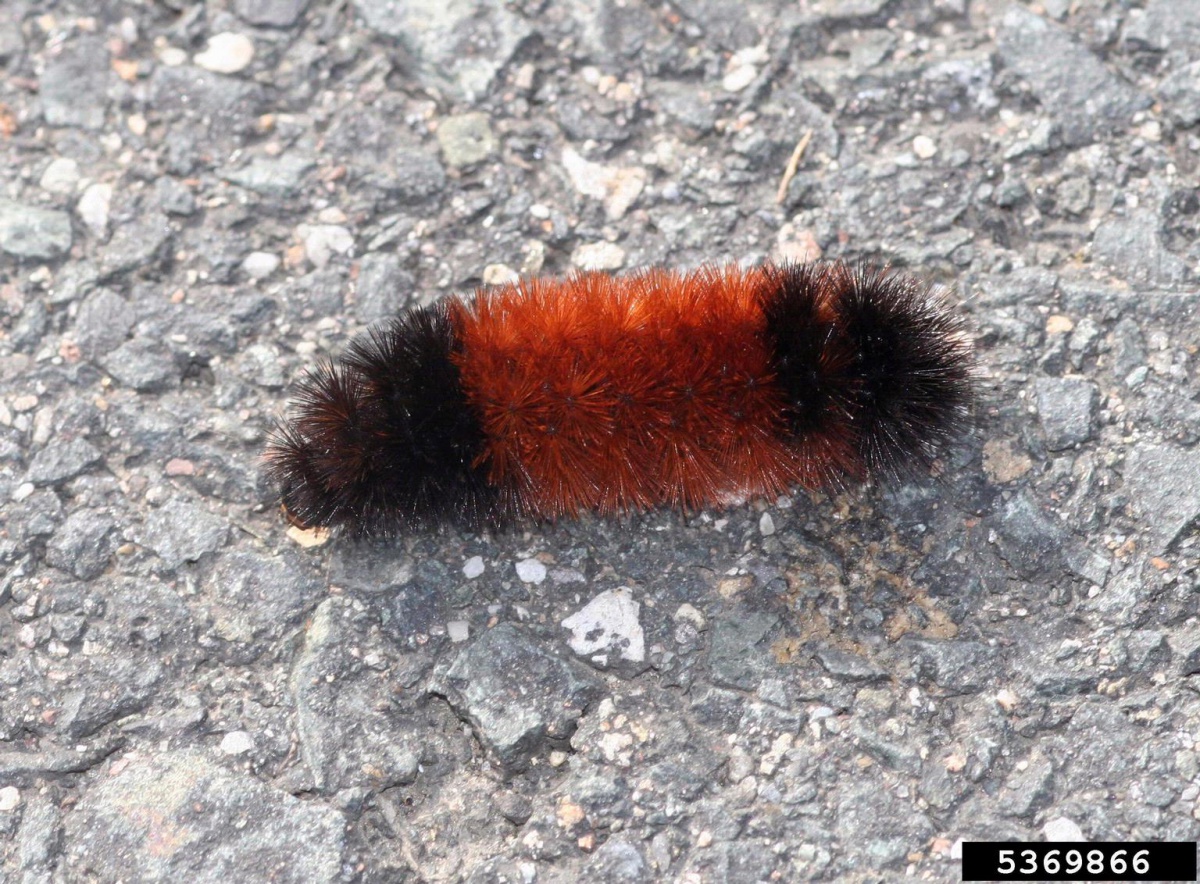
Prominent moth caterpillars
Several Datana caterpillars are frequent pests of small and tree fruits, drawing the attention of fruit growers and gardeners. The yellownecked caterpillar (Datana ministra) feeds on blueberry, apple and other fruit trees along with a wide variety of shade trees, feeding during the summer in groups, often congregating near the ends of twigs and branches. Datana species can be difficult to identify to the species by their coloration, which can be variable depending on the maturity of the caterpillar, but their behavior and general appearance is consistent across species.

The red-humped caterpillar (Schizura concinna) feeds side-by-side within groups and can defoliate a variety of woody plants, including small and tree fruits. These caterpillars are active feeders throughout the summer.
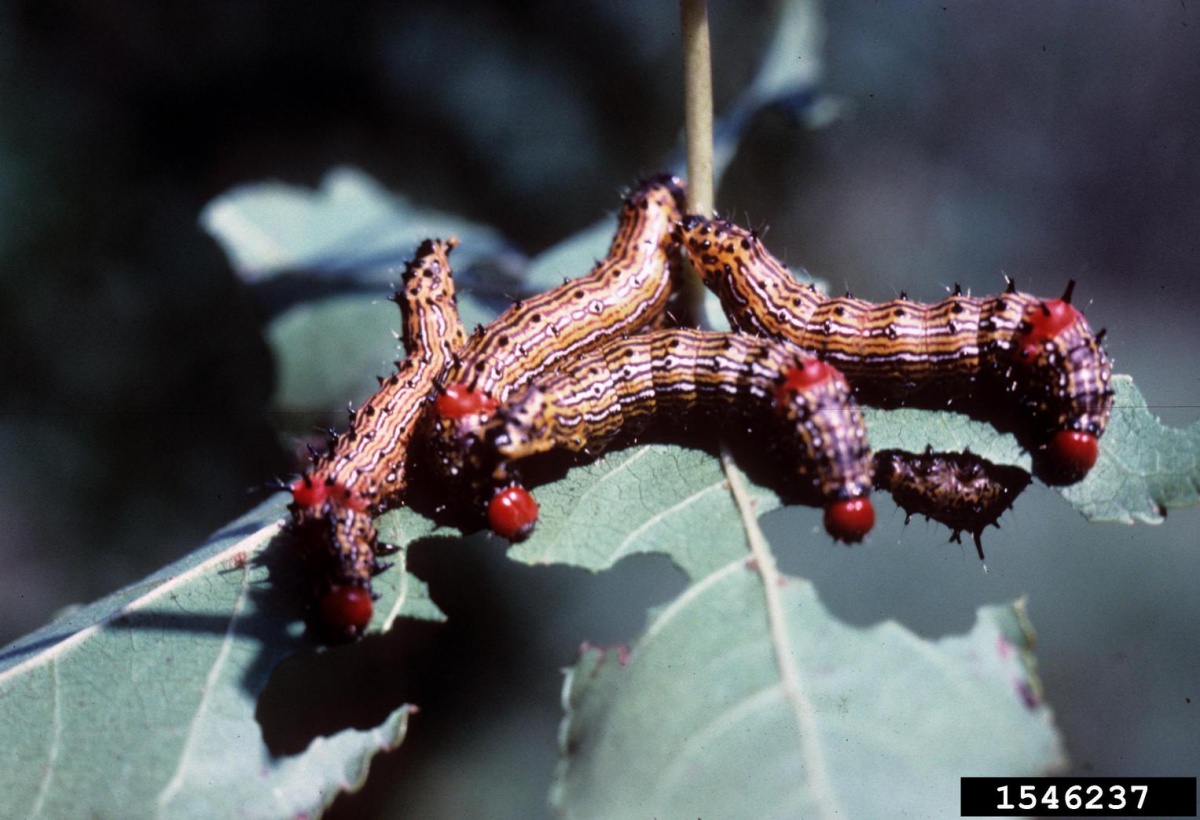
Managing caterpillar damage in the home landscape
In the late summer and fall, leaf defoliation from caterpillar feeding doesn’t merit chemical control for homeowners. Handpicking may be helpful for protecting ornamental trees and shrubs, but that is less for the health of the plant and more for preserving its aesthetic later into the fall. Most caterpillars only feed for a couple weeks or so before pupating, which means that unless a caterpillar is feeding in large numbers and is known to quickly defoliate, control isn’t warranted.
Natural pesticides like B.t. and Spinosad are most effective when used on young caterpillars, but caterpillars are usually only noticed in the landscape once they’ve matured. There are synthetic pesticides available to home gardeners that are listed for caterpillar control, although these products are broad-spectrum and pose a hazard to non-target organisms.
Before using a pesticide, ensure you’ve correctly identified the caterpillar and have assessed what kind of threat it may or may not pose to the health of your plants. You can Ask UNH Extension for help with caterpillar identification and assessing what risk they may pose to your plants.
Got questions? The Ask UNH Extension Infoline offers practical help finding answers for your home, yard, and garden questions. Call toll free at 1-877-398-4769, Monday to Friday, 9 a.m. to 2 p.m., or e-mail us at answers@unh.edu.
Related Resource(s)
Do you love learning about stuff like this?
SUBSCRIBE TO Granite State Gardening newsletter
Got questions? The UNH Extension Yard and Garden Infoline offers practical help finding answers for your yard and garden questions.
Call toll free at 1-877-398-4769, Monday to Friday, 9 a.m. to 2 p.m., or fill out webform.
